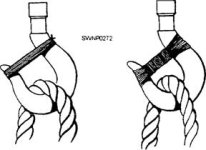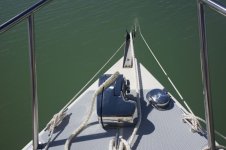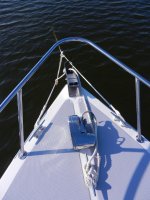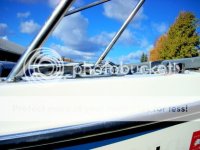I have also used the simple galvanized chain hook, but the SS plate is better in my experience for several reasons:
It allows two snubbers at the same point. Especially on larger boats, (all chain--and we have all chain in this C Dory 25), one thin snubber, which has more elasticity, and a second one backing it up, if the first fails. I had one fail in over 8 years of full time cruising, anchoring most nights.
It allows to easily mouse the plate to the chain--a chain hook also allows the line to be moused: for illustration only, this is not a chain hook, but similar.

chain hook:
A SS plate (you can also put two small additional holes for mousing--but the plate is less likely to fall off the chain. I have had the chain hook fall off on several occasions.
While on the subject, some like a "Devil's claw"
I agree that you should use a thimble and spliced attachment. Every galvanized chain hook I acquired did rust. Chain had to be re-galvanized every 2 to 3 years. Chains were reversed end for end at least once a year, and were 200 feet long. 80% of the time I anchored on chain only, and did not have to go to the back up line. Attach a snubber, or snubbers to a line--a rolling hitch, as illustrated in the photos previously posted.
When we are on the subject, there is the classic question about size of the shackle--since we are using HT chain, and HT shackles are hard to come by, and not usually well galvanized. I am using the SS Wichard HR Bow Shackle. If you really felt that this was not adequate, then there is the option of Titanium…for about $400! I'll take my chances! (and stand an anchor watch)







